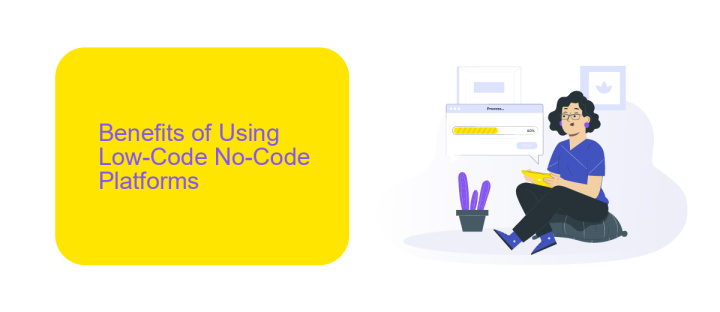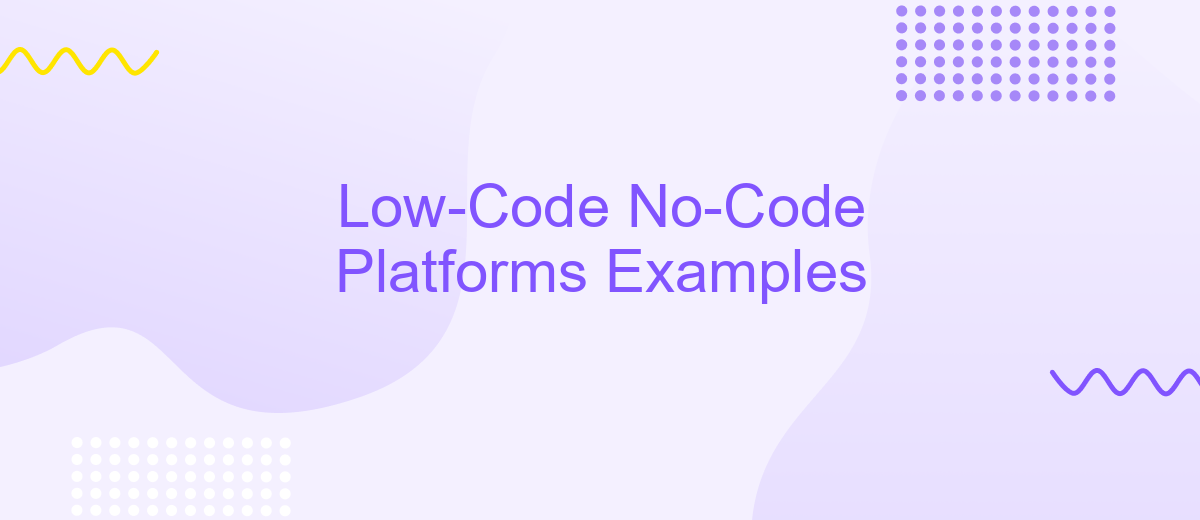Low-Code No-Code Platforms Examples
Low-code and no-code platforms are revolutionizing the way businesses develop software by enabling users to create applications with minimal or no coding knowledge. These platforms offer intuitive drag-and-drop interfaces, pre-built templates, and automated workflows, making software development accessible to a broader audience. In this article, we will explore some of the leading examples of low-code and no-code platforms that are transforming the tech landscape.
Introduction to Low-Code No-Code Platforms
Low-code and no-code platforms have revolutionized the way businesses approach software development. These platforms provide a visual, drag-and-drop interface, enabling users to create applications without extensive coding knowledge. This democratization of app development accelerates time-to-market and reduces costs, making it accessible to a broader audience.
- Ease of Use: Intuitive interfaces allow non-developers to build functional applications.
- Speed: Rapid development cycles enhance productivity and innovation.
- Cost-Effective: Reduces the need for extensive developer resources.
- Integration: Seamlessly connects with other tools and services, like ApiX-Drive, to automate workflows.
These platforms empower organizations to quickly adapt to market changes and customer needs. By leveraging tools like ApiX-Drive, businesses can easily integrate various applications and automate processes, further enhancing efficiency. As a result, low-code and no-code platforms are becoming indispensable assets in the modern digital landscape.
Benefits of Using Low-Code No-Code Platforms

Low-code and no-code platforms offer a myriad of benefits for businesses and developers alike. One of the primary advantages is the significant reduction in development time. These platforms allow users to create applications quickly without extensive coding knowledge, enabling faster deployment of solutions. This efficiency not only accelerates project timelines but also reduces costs associated with hiring specialized developers. Additionally, the intuitive drag-and-drop interfaces make it easier for non-technical team members to participate in the development process, fostering greater collaboration and innovation within the organization.
Another notable benefit is the ease of integrating various services and applications. Platforms like ApiX-Drive simplify the process of connecting different software tools, ensuring seamless data flow and automation across systems. This capability is crucial for businesses looking to streamline operations and improve productivity. By leveraging low-code and no-code platforms, organizations can quickly adapt to changing market demands and technological advancements, maintaining a competitive edge. Moreover, these platforms often come with built-in security features and compliance standards, providing peace of mind and safeguarding sensitive data.
Examples of Low-Code No-Code Platforms

Low-code and no-code platforms have revolutionized the way businesses develop applications by simplifying the development process and reducing the need for extensive coding skills. These platforms enable users to create, customize, and deploy applications quickly and efficiently.
- OutSystems: A comprehensive low-code platform that allows users to develop, deploy, and manage applications with ease. It offers a wide range of pre-built templates and components.
- Mendix: Known for its collaborative development environment, Mendix provides tools for both business users and developers to create applications rapidly.
- ApiX-Drive: This no-code platform specializes in setting up integrations between various services and applications, enabling seamless data transfer and automation without any coding.
- AppSheet: A no-code platform by Google, AppSheet allows users to create mobile and web apps from data stored in spreadsheets and other databases.
- Microsoft Power Apps: Part of the Microsoft Power Platform, Power Apps enables users to build custom apps using a drag-and-drop interface, integrating seamlessly with other Microsoft services.
These platforms cater to different needs and skill levels, empowering both technical and non-technical users to bring their ideas to life. Whether you are looking to automate workflows, integrate services, or develop complex applications, there is a low-code or no-code platform to suit your requirements.
Use Cases for Low-Code No-Code Platforms

Low-code and no-code platforms have revolutionized the way businesses approach software development. These platforms empower non-technical users to create applications and automate workflows, significantly reducing the time and cost associated with traditional development methods.
One of the most common use cases for low-code and no-code platforms is in the realm of business process automation. Companies can streamline their operations by automating repetitive tasks, such as data entry, invoicing, and customer support workflows. Additionally, these platforms are often used for rapid prototyping, allowing teams to quickly validate ideas and iterate on solutions without extensive coding knowledge.
- Automating business processes such as data entry and invoicing
- Creating custom CRM systems tailored to specific business needs
- Developing internal tools for project management and collaboration
- Setting up integrations between various software applications using services like ApiX-Drive
- Building customer-facing applications, including portals and self-service platforms
By leveraging low-code and no-code platforms, organizations can enhance their agility and responsiveness to market changes. These tools enable a broader range of employees to contribute to the development process, fostering a culture of innovation and continuous improvement.
Conclusion
In conclusion, Low-Code No-Code platforms have revolutionized the way businesses approach software development, enabling rapid application creation with minimal coding expertise. These platforms empower non-technical users to contribute to the development process, thereby accelerating project timelines and reducing costs. By democratizing software development, organizations can foster greater innovation and responsiveness to market demands.
Moreover, the integration capabilities of these platforms, such as those offered by ApiX-Drive, further enhance their utility by seamlessly connecting various applications and services. This ensures a cohesive workflow and allows businesses to automate processes efficiently. As the demand for agile and scalable solutions continues to grow, Low-Code No-Code platforms will undoubtedly play a crucial role in shaping the future of software development.
FAQ
What are Low-Code No-Code platforms?
Who can benefit from using Low-Code No-Code platforms?
Can Low-Code No-Code platforms be used for automation and integration?
What are some common use cases for Low-Code No-Code platforms?
How secure are Low-Code No-Code platforms?
Apix-Drive is a universal tool that will quickly streamline any workflow, freeing you from routine and possible financial losses. Try ApiX-Drive in action and see how useful it is for you personally. In the meantime, when you are setting up connections between systems, think about where you are investing your free time, because now you will have much more of it.

